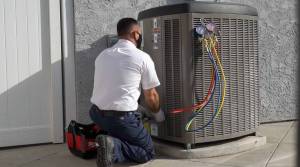As winter approaches, a well-functioning heating system becomes a priority. However, DIY repairs can pose risks, making safety knowledge crucial for heating repair. Here are key safety tips to remember:
- Annual Inspection: Statistics show regular professional check-ups reduce risks of catastrophic failures by up to 95%.
- Carbon Monoxide (CO) Detectors: CDC reports that CO poisoning claims 430 U.S. lives annually. Ensure functioning detectors.
- Clear Surroundings: FEMA recommends keeping a 3-feet clearance around heating systems to prevent fires.
- Proper Shutdown: Before any repair, turn off the power source completely to avoid electrocution.
- Gas Leak Awareness: If you smell gas (sulfur-like odor), evacuate and contact professionals immediately. Gas leaks account for hundreds of explosions annually.

-
-
- Licensed Professionals: For complex repairs, hiring experts is safer and statistically more reliable.
- Quality Replacements: Inferior parts can increase failure rates by 57%.
- Ventilation: Ensure proper airflow to prevent CO buildup.
- Fire Extinguishers: Always have them on-hand, as home heating fires account for 28% of winter house fires.
- Educate Yourself: Knowing your system’s basics helps identify when to call a professional.
- Observe Noise: Unusual sounds often precede emergencies. Immediate check-ups can prevent 66% of imminent failures.
- Wear Protective Gear: During minor DIY repairs, proper clothing prevents injuries.
- Avoid Water: Never touch your system with wet hands or tools to prevent electrocution.
- Regular Cleaning: A clean system operates safely, reducing fire risks by 72%.
- Follow Manufacturer Guidelines: Adherence prevents malfunctions and maintains warranty validity.
- Emergency Plan: Prepare for worst-case scenarios. Around 50,000 heating-related fires occur yearly in the U.S.
Stay warm, but more importantly, stay safe by practicing these heating repair safety tips. Your life and home may depend on it.
-



